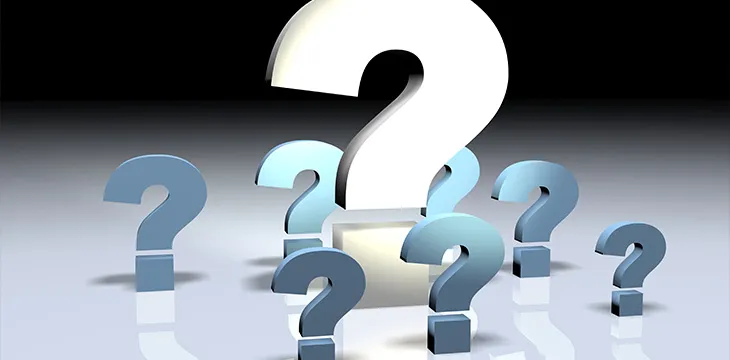|
Getting your Trinity Audio player ready...
|
Is Web 2.5 the latest ‘crypto’ buzzword? On October 23, I attended Money 20/20 in Las Vegas. Money 20/20 is one of the world’s largest fintech conferences, and this year they had an entire track dedicated to “Web 2.5.”
Before the conference, I had heard the phrase “Web 2.5,” but I did not give it much attention. Why? Because similar to Web3, Web 2.5 seemed to have an ambiguous definition that was just vague enough that it could be applied to a wide range of businesses in a way that you could derive that a company used—or would like to use a blockchain—but you could not really understand what problem in the market they were trying to solve was.
I’m not going to say I’m a believer in “Web 2.5” just yet or that I think the phrase is going to stick, but going to several seminars on the Web 2.5 track at Money 20/20 did clear up some confusion I had around the topic.
What is Web 2.5?
Web 2.5 is becoming the word used to describe blockchain businesses that live between Web2 and Web3. The idea behind this is that consumers want the advantages of a blockchain-based platform. However, they don’t want the complexities and friction that often come with blockchain-based systems.
“People want [Web 3] experiences and access to ownership, but they do not want to deal with the hassle of creating a wallet, recording their seed phrase, finding a storage solution, etc,” said Stephane Kasriel, the Head of Commerce & Financial Technologies at Meta (NASDAQ: META) during his keynote presentation.
Web 2.5 aims to accomplish this by bridging the Web2 world that consumers are familiar with to the Web3 world that blockchain enthusiasts claim is inevitable So what does this look like in practice? One example of Web 2.5 would be when brands distribute NFTs to reward their customer base or when brands distribute tokens that act as loyalty points or give their customers discounts and perks when they shop with them in the future. Web 2.5 processes do not require the customer or end user to buy coins or tokens or create a wallet themselves. That portion of the process is abstracted away by the merchant or service provider. But when the end-user spends their fiat currency with the merchant/service provider, they will receive digital assets that can seamlessly be used in the fiat system they are used to.
As you can see, blockchain is a necessary component of the system, but the end-user never realizes or feels like they are interfacing with a blockchain protocol.
What does this mean for businesses, consumers, and engineers?
So far, I have primarily been talking about what Web 2.5 looks like in theory, with one example of implementation (NFTs or coins/tokens distributed as achievements and loyalty rewards). But the idea behind Web 2.5 and the one example I gave is really just a microcosm of how brands strategize around Web 2.5.
“[Web 2.5] is really just about using [blockchain] as an avenue to build community,” said John Lee, the head of blockchain at Shopify, during his Money 20/20 panel titled “Token-Gated Commerce Is What’s Next For Brand Loyalty.”
The companies that we consider household names recognize that incorporating some sort of blockchain-based element(s) into their platform can be a useful tool that helps them build community and create additional revenue streams. These brands want their users to have customer journeys that they are already familiar with. Still, at the end of the journey, they want to reward them with digital assets that make them feel like they are part of an exclusive group or coins/tokens that give them perks when shopping at the business in the future.
Web 2.5 blends “traditional” processes with blockchain-based concepts that have been successful in building community and brand loyalty; as the community grows and daily active users or repeat customers increases, the brand tends to bring in more revenue. On the other side of this equation, customers and end-users are rewarded for shopping with the brand, they are given digital assets that give them exclusive access to a group or first access to upcoming brand releases, and they also have the chance to collect coins and tokens that give them perks and discounts when shopping with the brand, so at the end of the day, both the business and the consumer win in their own ways.
So where will Web 2.5 go from here? I don’t know. Web 2.5 is just a new label that accurately describes the most recent trend that big corporates and brands were riding when it came to blockchain. I wouldn’t say any part of Web 2.5 is new or novel, but there are some lessons to be learned from how some of the world’s largest companies that were not previously interested in blockchain are approaching and implementing digital assets into their existing service.
Watch: The BSV Global Blockchain Convention panel, Web3 and BSV Blockchain

 07-05-2025
07-05-2025 





